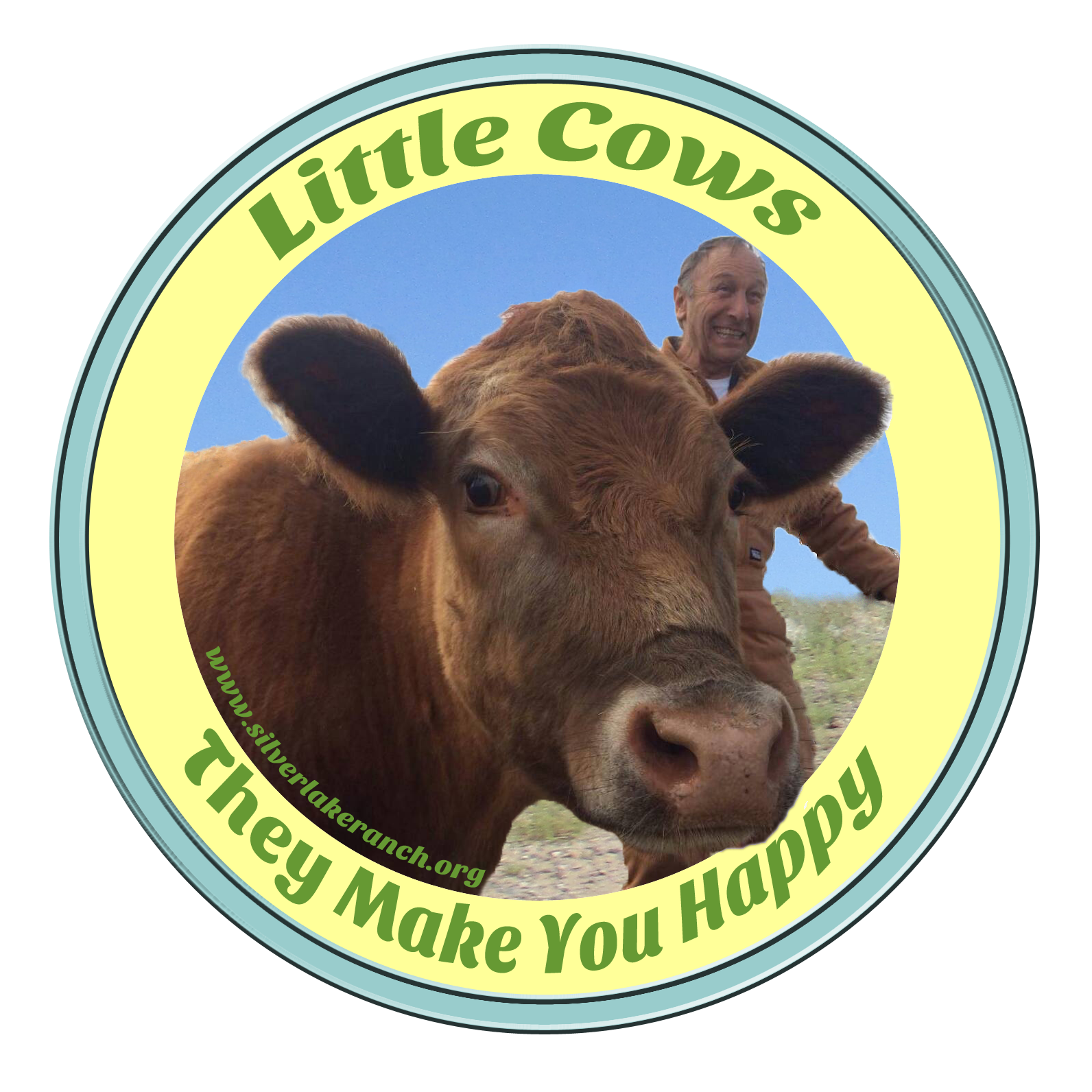
MINIATURE JERSEY COWS

Silver Lake Remington a bull calf at 5months old.
Author Nicole Charshafian May 2014, Photographers and Illustrators, Yerazel and Yerani Charshafian.
BACKGROUND
The Jersey breed originated on the Island of Jersey, (a small British island off the coast of France). The Jersey is one of the oldest dairy breeds, known in England around 1770. They were commonly referred to as Alderney cattle. Jersey cattle were brought to the United States around the 1850's.
The Jersey is adaptable to a wide range of climatic and geographical conditions and are found all over the world. Jerseys are thought highly of because of their milk and butterfat production. They produce more pounds of milk per pound of body weight than any other breed. Most Jerseys can produce more than 13 times their own bodyweight in milk during each lactation.
PHYSICAL CHARACTERISTICS
Jersey Cows have refined heads and shoulders, they have long, straight top lines, and are long and level at the rump. They are usually deep in the body and barrel for their size. Standard Jersey cows weigh between 800 and 1200 pounds.
Jersey bulls, while small in comparison to other dairy breeds, are extremely muscular around the chests and shoulders. The same general qualities of straight lines and diary conformation found in the cows are desired in bulls. Standard Jersey bulls weigh 1200 to 1800 pounds. Jersey bulls are known for having the least docile temperament of the common breeds of cattle. Jersey bulls can become dangerous past twelve months of age.
Modern Jerseys come in a wide range of color varying from a very light mouse color to a very dark fawn or a shade that is almost black. Both bulls and females are commonly darker about the head and shoulders.

Illustration showing the anatomy of a cow.
MINIATURE JERSEY CATTLE
BACKGROUND
There are two categories of miniature cattle. If an animal is under 42inches at 3 years of age it is considered a full –miniature. If it is between 42-48in at 3 years of age they are considered mid-sized miniatures. (the different registries have slightly different measurement requirements). Jerseys come in both categories, full miniature and mid-miniature.
CHARACTERISTICS
The same traits of the full sized breed are desired in the miniature Jersey cattle, of course only smaller!! Most miniature Jerseys provide between 1-3gals of milk per day and are milked once or twice a day. Jersey cattle are horned animals. Many have been breed with Icelandic or Fresian cattle (usually way back in their lineage) to create polled animals. That is animals born without horns. These are still considered “purebred” and can be registered as such. Cows born with horns are often de-horned while very young. Jerseys are known for their “Doe faces”, the dished face, large wide-set eyes and alert large ears. They are light around their muzzle and have black or pink noses. Their tails are long and sweep close to the ground. Cows can weight up to 800lb and bulls 1000lb.

Jerseys can range in temperament and how vocal they are. Cows are herd animals so they do not like being alone. In the absence of other cows they will substitute another animal or person for their herd. Separating them from their herd can be stressful. Like all herd animals there is a pecking order when it comes to food and favorite places to nap or get treats/pats. Usually the animals will sort it out themselves without interference from humans but when introducing new animals to a herd, especially if there is a noticeable difference in size watch for overly aggressive behavior, especially from the alpha (top) cow.
Aggressive postures include low swinging head and shoving another animal into the ground with their head (goring). They are also very adept at kicking in just about all directions with their back legs, including out to the side. Stepping on you is also aggressive posturing. A fast swishing tail is often a good sign a cow is angry or agitated.
Affection is showed in many ways and sometimes can be confused as aggression or vice versa. They have a tendency to stand on your feet just to be close to you or rub their head on you, sometimes with enough force to give you a nice shove off balance. Unlike a lot of animals, ears back is not always a sign of unhappiness, often it is just alertness- listening to their surroundings. They are real lickers and their tongues are rougher than a cat’s and long!
TRAINING
Cows are certainly not the most intelligent animals but they can be trained. They can be halter trained and trained to pull carts or farming equipment. They will learn their names quickly and will come when called. They can learn to be around other animals like chickens and dogs and goats.

Silver Lake Bluebell Bella working on halter training.
HOUSING
There are varying opinions on the size of enclosures needed for animals and a lot has to do with husbandry practices including cleaning, feeding and shelter choices. They are strong and destructive animals. They will rub on things and chew on things. Our smallest enclosure is 30ft x 30ft with a 10ft x 20ft barn. We muck daily and feed outside the barn. Cows do not always use shelter even on 100degree days but we always like to provide animals with the option of getting out of the weather. One animal will require a 10’x10’ shelter minimum. Without regular cleaning and removal of bedding or the top layer of ground, the urine and feces will quickly build up to unpleasant levels for both you and the animals.
There are a lot of wire choices for enclosures. Below are some of the pros and cons of each that we have personally found.
Chainlink: pro-nice sized holes to keep people out, no sharp edges, easy to manipulate-shorten or lengthen, works with wood or steel posts
Cons- stretches easy, expensive, needs same mesh size to extend
Horse fencing: pros- nice sized holes to keep people/things out, strong, hangs well
Cons- expensive. Sharp at each joint
Field fencing: pros, inexpensive, easy to work with
Cons- hard to stretch/tighten on posts, large holes allow access sharp joints
Barbed wire: pros- animals don’t rub too hard on it, keeps people from leaning on/in, tightens easy, can be electrified.
Con- can be dangerous to humans and animals if tangled in it, hard to work with because of barbs.
Hot- Wire: pros- easy to work with and tighten, quick to construct, keeps animals and people in or out
Cons- shock!!, possible to reach between lines of wire, can be expensive
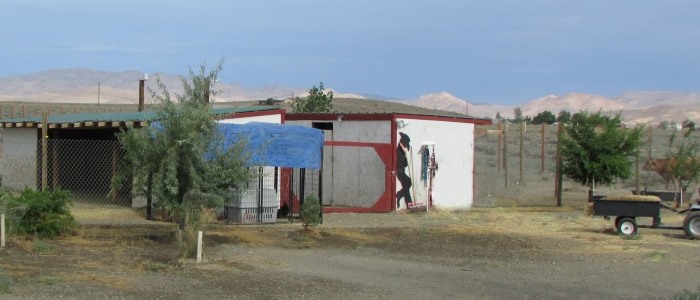
Silver Lake Ranch, Desert Base’s cow barns and corrals.
Feeding
Cattle are grazers which means they are designed to eat small amounts of grass or pasture continually throughout the day. But unfortunately that is not always available to cattle owners. Since it is their natural method of feeding pasture is always wonderful and best if available. There are many varieties of grasses and legumes that can be grown as pasture which are wonderful for cows, Timothy grass orchard grass, rye grass, alfalfa, wheat, just to name a few. All have positive aspects and drawbacks. It is important to research what will work in your area. Often times pasture needs to be supplemented with hay during certain times of the year or stages of the animal’s life. If you are feeding hay exclusively count on the animal eating its weight in hay each month ie a 600lb cow will eat 600lb hay in 28 days. It is invaluable to find a good hay grower you can trust to provide you with exactly the hay you ask for, including the quality. Moldy or weedy hay is often sold as “cow hay”. But be warned a lot of cows will not eat all types of mold in moldy hay and often it doesn’t have a lot of nutritional value. Weeds often found in cow hay like foxtails can become wedged in the cow’s teeth and abscess. Protein content is always important to consider when choosing a food. Young and lactating animals need higher levels of protein than a mature bull or dry cow (not in milk). They also need roughage to keep their rumen functioning as it should. Hay cubes are easy to handle and usually readily available in different combinations. Be careful about choking on cubes. If they are competing for food it is easy for the cows to try and swallow cubes whole. Some people wet the cubes down to soften them before feeding but it can make the animal not drink enough and it can make the cubes fall apart and not be palatable. Hay Pellets are not a good feed choice as they do not provide long enough strands of roughage and will effect digestion. Lactating cows usually need a grain or mash supplement to help keep a healthy weight and produce milk. There is a huge variety available and again research and a bit of trial and error is usually necessary to see what works best for your animals and you. Depending on the staple food provided, a lactating mini cow will often need 5lb of grain at each milking. Mini jerseys are a costly investment and good quality feed is one of the most important things to consider to keep your animal healthy.
It is crucial to have fresh water available at all times. It is always easier to have huge troughs that just get “topped off” but in no time have bugs, algae etc growing in them. It is always healthier to provide fresh water daily. It is not unheard of for a mini jersey to consume 10+ gallons of water per day. And like a lot of animals if their water is not palatable and they can, they will tip it out!! A good salt/mineral lick is also mandatory to provide the cows with the necessary trace minerals to stay healthy.
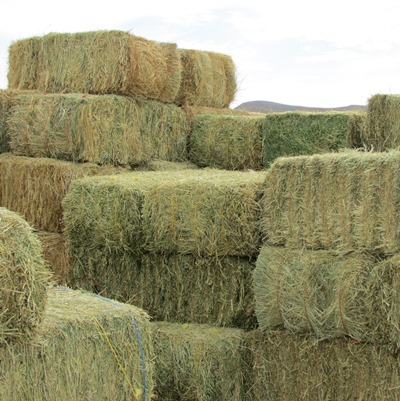
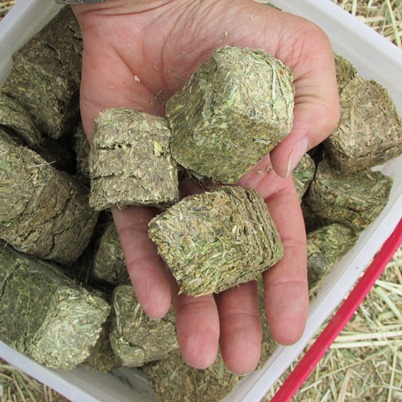
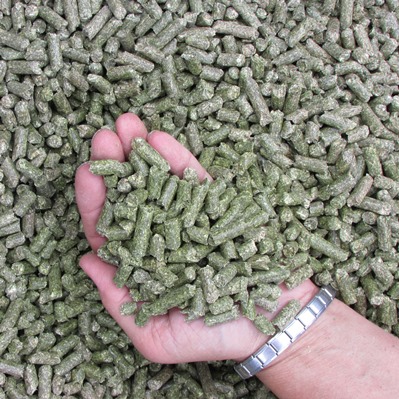
Grass/alfalfa and alfalfa hay, Grass/alfalfa cubes and alfalfa pellets.
CARE
Most cows like to be patted and given attention. If you are planning on milking the cow it is necessary to have the animal accustomed to your touch everywhere. Start training the calf young, if possible. Patting and brushing is a good way to observe any injuries or sore spots on your animal. There are lots of different types of brushes available, Brushing with the direction of hair is always most comfortable for the cows. Wiping their eyes with a damp paper towel is something that can help them deal with dust, hay dust, weepy eyes and bugs. Check in their ears regularly as things can get caught. Checking teeth is more of a challenge. Although cows do not have teeth on top in the front they have VERY powerful jaws and teeth both top and bottom in the back which make checking the back molars dangerous. NEVER put your fingers between their teeth. It is good to check for food particles embedded between teeth by feeling the outside surface of the teeth. If you have only soft pasture or ground the hooves will grow and when the toes begin to cross over they need to be trimmed. Having a rocky/gravelly or concrete area can help wear them down so that it is usually not necessary to trim. Vaccination and worming schedules are a very individual decision. Having a good large animal vet who knows cows, preferably mini cows can help you make the best decisions for your herd. Whether or not you are planning on running a closed herd, selling across state borders, attend fairs or 4h events or allow studding or send your cows to a stud will all play a role in what preventative care you choose.
References:
Briggs, Hilton M and D.M. Briggs. 1980. Modern Breeds of Livestock. Forth Edition, MacMillan Company Accessed May 2014
Gradwohl Richard Dr 1997, What are Miniature Cattle?, http://www.minicattle.com/what.html 2014 accessed May 2014
Hazard Willis, 1913, The Jersey and Alderney and Guernsey Cow: How to Choose Manage and breed to the Most profit, https://archive.org/details/jerseyalderneygu00haza accessed May 2014
Unknown, 1997, Jersey , http://www.ansi.okstate.edu/breeds/breeds/cattle/jersey/index.htm
accessed May 2014